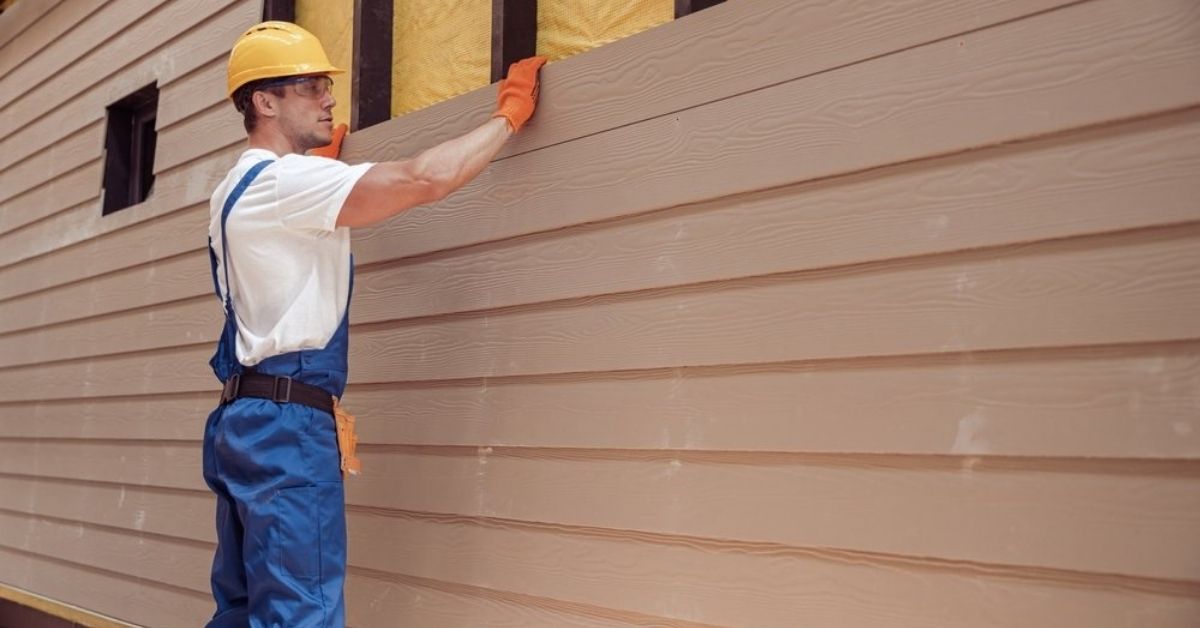Most people want to install the wood siding, but they don’t know how to do it. Basically, installing wood siding on the exterior is a process that can enhance its appearance and protect it from the weather.
Before jumping into the process, people first search for how much does wood siding cost. So, wood installation costs between $3 and $10 per square foot on average.
Moreover, you may wonder where to start if you plan to set up wood siding in your home. No worries! Here, we will disclose the secrets to establishing wood siding and turning your home into a masterpiece. So, let’s start!
Materials & Tools You’ll Need for Wood Siding Installation
- Wood siding panels or boards
- House wrap or building paper
- House wrap tape
- Nails or screws
- Circular saw, or miter saw
- Carpenter’s square
- Level
- Tape measure
- Utility knife
- Caulk and caulk gun
- J-channels or trim pieces (if needed)
- Paint or stain (for finishing)
Steps to Follow for Installing Wood Siding
Without delay, have a look at the below for some significant steps that you can follow to install wood siding:
Step 1: Preparation
- First of all, you have to evaluate the height and width of each wall where you plan to install wood lap siding. Calculate the square footage needed.
- Purchase the appropriate type and quantity of wood siding. Choose between wood panels, lap siding, or shingles.
- Clear the work area and remove any existing siding, if necessary.
Step 2: House Wrap Installation
- During the house wrap installation process, it’s important to make sure that you cover the exterior wall sheathing completely.
- Initiation from the base of the wall and working your way up, overlap each layer of house wrap or building paper by at least 4-6 inches to ensure maximum protection against moisture and air infiltration.
- After installing the house wrap, use house wrap tape to seal any seams around windows and doors.
Step 3: Flashing Installation
- Regarding how to install wood siding panels, flashing is a thin, waterproof material installed to direct water away from vulnerable areas of a building’s exterior.
- By placing flashing around windows, doors, and other openings, you can protect your home from moisture damage and keep it looking great for years.
- However, it’s important to ensure the flashing is properly sealed and caulked to prevent any gaps or joints from allowing water to seep through.
Step 4: Starting Point
- Choose a starting point for the siding, usually at a corner or a bottom edge. The choice depends on the type of siding you are using.
- After you have chosen the starting point and marked a level line, you can begin the wood siding installation.
- Measure and mark a level line at the starting point to ensure straight alignment.
Step 5: Installing Wood Siding Panels
- Install the first piece, making sure it is level and plumb. You can utilize a carpenter’s square to check for right angles.
- Nail or screw the siding into place, leaving a small gap (usually around 1/8 inch) between pieces for expansion and contraction.
- Continue to install subsequent pieces, ensure each one overlaps the one below it, and cut the last piece to fit, using a circular or miter saw as needed.
Step 6: Corner and Trim Pieces
- To install wood lap siding, set up corner trim or J channels around corners, windows, and doors. These provide a finished edge and help channel water away.
- After you have installed the siding panels, it’s time to install the corner and trim pieces. These pieces not only provide a polished look to your home’s exterior but also serve as a significant protective layer by channeling water away from the corners, windows, and doors.
- Use a level and carpenter’s square to ensure they are installed straight and plumb.
Step 7: Finishing
- Fill any gaps or nail/screw holes with caulk to prevent water infiltration.
- Sand any rough edges or imperfections in the wood.
- Apply a high-quality wood finish, either paint or stain, to protect the wood siding from moisture and UV damage.
Step 8: Maintenance
- As we are talking about how to install vertical wood siding, regularly inspect the siding for signs of damage or wear and touch up any areas where the finish is deteriorating.
- Apply a soft-bristled brush or a pressure washer on a low setting to wash the siding to eliminate dirt or grime accumulation.
- Afterward, be careful to rinse with clean water properly. Also, trim any nearby trees or shrubs brushing against the siding, as this can cause damage over time.
When You Should Install Wood Siding?
When preparing to installing wood siding, you must consider the climate. A dry climate is ideal to avoid trapping moisture behind the moisture barrier or the siding, which could lead to rot and damage over time.
Before siding, acclimate the wood siding outside for at least 7 days but no more than 30 days. This process allows the wood to adjust to the environment and helps prevent warping or cracking.
Be sure to elevate the wood by 12 inches or more and separate layers of siding with scrap wood blocks to promote airflow and prevent moisture buildup. It’s crucial to shield the wood from the elements to keep it dry when storing it.
To prevent mold or mildew growth, it’s best to avoid covering the wood with a tarp or plastic, which can trap moisture. Instead, opt for a breathable cover or store the wood under a roof or overhang.
On a Final Note!
Hopefully, the above steps on how to install wood lap siding will assist you in doing the work properly. Installing wood siding is a great way to enhance the appearance of your home and boost its curb appeal.
With the right tools, materials, and techniques, it can be a rewarding project to save you money in the long run. If you are considering siding services, get from professionals and experts to get everything according to your requirements.
By taking the actions indicated in this guide, you can successfully install wood siding on your home’s exterior and enjoy this timeless material’s natural beauty and durability for years to come.






